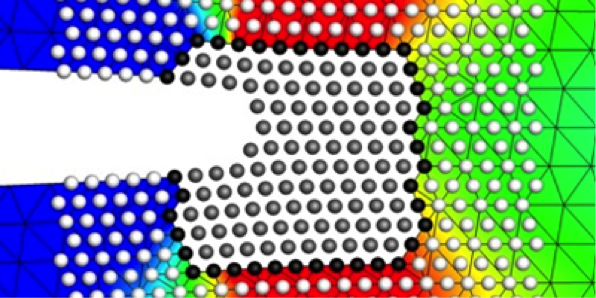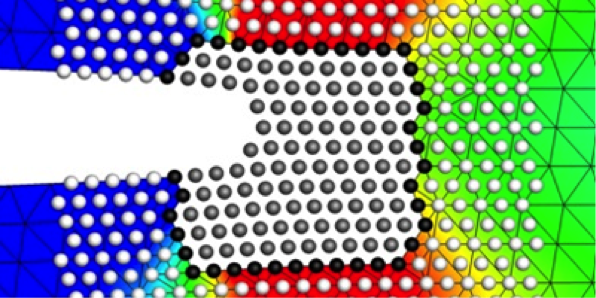Doing a Crack Job on Aluminum
Engineers and materials scientists have long known that environmental factors can affect the fragility of manufactured components. Sometimes this is useful, as when a glassmaker applies a drop of water to a scribe mark to facilitate a clean break. More often, the chemical environment leads to reduced durability, as when aluminum under cyclic loading experiences a higher failure rate if the humidity increases. These effects are typically studied with a top-down approach: assemble lots of data on the way different materials respond to an environmental stress to arrive at a general mechanism. But a microscopic bottom-up approach is possible now with advanced computing tools, as Rick Zamora and colleagues at Cornell University, New York, report in Physical Review B.
The authors used the NASA Pleiades supercomputer to simulate the behavior of a crack in aluminum at an atomic level under different environmental conditions. These detailed multiscale calculations were run for three cases: a crack tip with no impurities, a crack tip with a single hydrogen atom, and a crack tip with a single oxygen atom. Zamora et al. ramped up the load on the simulated sample until a dislocation was created.
Results from these calculations predict that the hydrogen and oxygen impurities strenghen the aluminum bonds at the surface by means of charge transfer, inhibiting plasticity at the crack and raising the likelihood of brittle fracture. With this ab initio calculation, the Cornell team shows that a bottom-up approach can be a valuable tool for understanding embrittlement due to environmental causes. – David Voss





